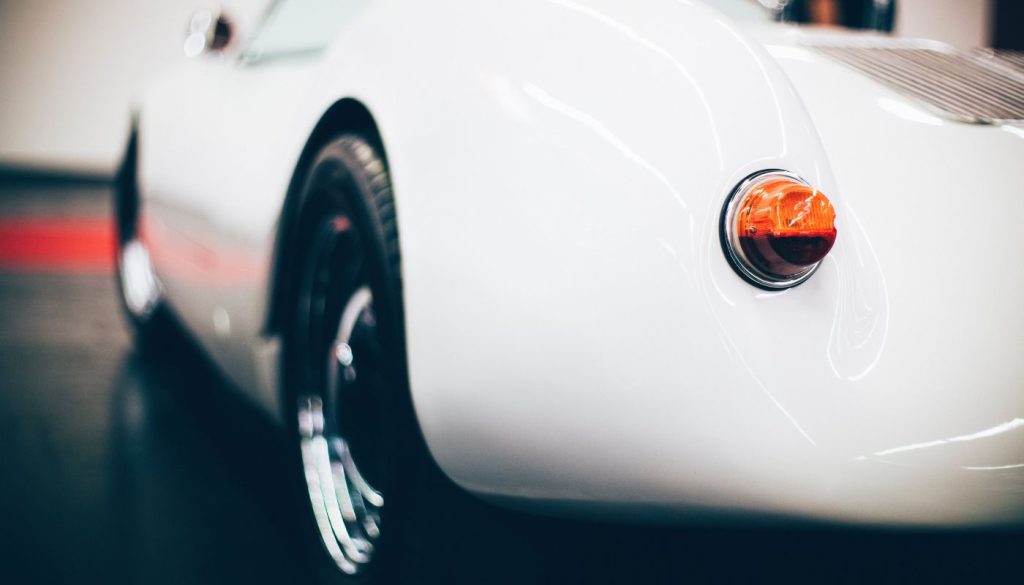Owning a vintage car is a true pleasure for car enthusiasts. These timeless beauties evoke a sense of nostalgia and charm that is hard to resist. However, maintaining a vintage car requires special attention and care to ensure its longevity and optimal performance. In this article, we will delve into the various aspects of maintaining a vintage car and provide you with a comprehensive guide to keep your prized possession in top-notch condition.
How Do You Maintain A Collectible Car?

Maintaining a collectible car is a labor of love. It’s a hobby that can require a lot of time, money and effort, but the rewards are worth it. If you want to keep your car in pristine condition, you’ll need to commit to regular maintenance. This includes cleaning, waxing and polishing the car on a regular basis. You’ll also need to make sure that the car is properly serviced and that all the parts are in good condition.
It’s also important to keep the car protected from the elements. You can do this by parking it in a garage or by using a car cover. If you want your car to stay in good condition, you’ll need to be careful with how you drive it. You should avoid driving it in rain or snow, and you should never drive it on rough roads or in sand.
If you’re not able to maintain the car yourself, you can hire a professional to do it for you. A professional car detailing involves a lot of work, but the end result is a car that looks and smells great. The first step in detailing your car is to clean it. This can be done with a car wash, or you can do it yourself with a bucket, soap, and a hose. Be sure to clean all the nooks and crannies, including the wheels and the undercarriage.
The next step is to polish the car. This will remove any scratches or blemishes. There are a number of different polishes available, so be sure to choose the one that’s best for your car. After the car is polished, it’s time to apply a wax. This will protect the paint and give it a nice shine. There are a number of different waxes available, so be sure to choose the one that’s best for your car, the final step is to clean the interior of the car.
How Do You Keep A Classic Car Clean?

Maintaining a classic car can be a daunting task. Between the constant polishing, waxing, and detailing, it can be hard to keep your car in top condition. However, with a few simple tips, you can keep your car looking its best. The first step is to keep your car clean. This may seem like a no-brainer, but it’s important to keep the dirt and grime off your car. Wipe it down with a clean cloth after every drive, and use a car wax or polish to protect the paint.
The next step is to keep the interior clean. This can be a bit more difficult, but it’s important to keep the interior of your car clean. Use a vacuum to clean the seats and carpets, and use a cleaner to remove any stains. The final step is to keep the engine clean. This may not be necessary for every car, but it’s important to keep the engine clean if you want it to last. There are a few things you can do to keep your engine clean. You can use a can of engine cleaner to clean the engine, or you can use a degreaser to clean the engine. You can also use a car wax to protect the engine.
Regular Maintenance

The key to preserving any vehicle, including vintage cars, is regular maintenance. This includes routine tasks such as oil changes, fluid checks, and filter replacements. It is essential to follow the manufacturer’s recommended maintenance schedule, even if your vintage car has a different set of requirements compared to modern vehicles. Regular maintenance will help identify potential issues early on and prevent major breakdowns.
One important part of a vintage car’s maintenance schedule is the tune-up. A tune-up is a comprehensive service that includes checking and adjusting all the car’s systems, including the engine, ignition, and brakes. A tune-up is also a good time to replace any worn-out parts or fluids. Tuning up your vintage car on a regular basis can help it run better and last longer.
If you’re not comfortable performing all the necessary maintenance tasks on your own, it’s a good idea to find a qualified mechanic who specializes in vintage cars. They will be familiar with the specific needs of your car and can help keep it in good condition. Following a regular maintenance schedule will help keep your vintage car running like new for years to come.
Choose the Right Fuel

Vintage cars often have carbureted engines, which can be sensitive to the type of fuel used. It is crucial to use the correct octane level recommended for your vintage car to avoid engine knocking or damage. Consult the owner’s manual or seek advice from a knowledgeable mechanic to determine the appropriate fuel type for your specific model.
In general, unleaded gasoline with an octane rating of 87 is recommended for most vintage cars. However, some models may require a higher octane rating. If your car experiences engine knocking or other damage when using a lower octane fuel, try a higher octane fuel. Do not exceed the octane rating recommended for your car.
Cooling System Maintenance
Vintage cars typically have less efficient cooling systems compared to modern vehicles. To prevent overheating, it is important to regularly check the coolant level and ensure proper circulation. Inspect the radiator for any leaks or clogs and clean it if necessary. Additionally, consider upgrading to a modern radiator or installing an electric fan to enhance cooling efficiency, especially if you live in a hot climate.
Electrical System Care

The electrical system in vintage cars can be delicate, and faulty wiring or connections can lead to various issues. Regularly check the battery for corrosion and ensure a secure connection. Inspect the wiring for any signs of damage or fraying, and have them repaired or replaced as needed. Pay attention to the electrical components, such as the starter motor, alternator, and distributor, as they may require periodic maintenance or replacement due to wear and tear.
Always use caution when working on the electrical system in a vintage car, as it can be easy to make a mistake that can lead to further damage.
Lubrication and Greasing
Vintage cars often have more mechanical components that require regular lubrication compared to modern vehicles. Ensure that all moving parts, such as suspension components, steering mechanisms, and door hinges, are adequately lubricated. Use a high-quality lubricant recommended for vintage cars to minimize friction and preserve the longevity of these components.
In addition, the engine and drivetrain should be lubricated with a product designed for those applications. Many lubricants designed for modern engines and transmissions are not appropriate for use in vintage vehicles. Consult your car’s owner’s manual or an experienced mechanic to determine the best lubricant to use in your vehicle.
Lubricating your vintage car is an important part of preserving its mechanical components. Use a high-quality lubricant specifically designed for vintage cars to minimize friction and preserve the longevity of these components. In addition, lubricate the engine and drivetrain with a product designed for those applications.
Tire Maintenance
Vintage cars often have bias-ply tires, which require special care compared to modern radial tires. Regularly inspect the tires for any signs of wear, cracking, or dry rot. Ensure that the tire pressure is maintained at the recommended level to optimize performance and prevent uneven wear. It is advisable to rotate the tires periodically to ensure even tread wear and extend their lifespan.
Rust Prevention: Rust is the enemy of vintage cars, and its presence can severely damage the body and structural integrity. Regularly inspect the body and undercarriage for any signs of rust or corrosion. Treat rust spots promptly by sanding, priming, and repainting the affected areas. Applying a protective coating or wax on the body can help prevent rust from forming and preserve the car’s appearance.
Upholstery and Interior Care
Vintage cars often have unique and luxurious interiors that require special attention. Keep the upholstery clean and free from dust and debris by regular vacuuming and using appropriate cleaning products. Avoid exposing the interior to direct sunlight for prolonged periods, as it can cause fading and damage. Consider using sunshades and protective covers when the car is parked outside.
Storage and Preservation
If you plan to store your vintage car for an extended period, proper storage techniques are crucial to preserve its condition. Ensure that the vehicle is parked in a dry, temperature-controlled environment to prevent moisture buildup and rust formation. Use a breathable car cover to protect it from dust and keep it away from direct sunlight. Start the engine periodically and let it run for a few minutes to prevent mechanical components from seizing.
Seek Professional Help
Maintaining a vintage car requires a certain level of expertise, and it is advisable to seek professional help for complex repairs or restoration projects. Look for a reputable mechanic or restoration specialist who has experience working with vintage cars. They can provide valuable advice and ensure that the necessary repairs or modifications are done correctly without compromising the authenticity of your vintage car.
Conclusion
In conclusion, maintaining a vintage car requires dedication, attention to detail, and a deep understanding of its unique characteristics. Regular maintenance, proper fuel choice, cooling system care, electrical system maintenance, lubrication, tire maintenance, rust prevention, upholstery and interior care, storage techniques, and seeking professional help are all essential aspects of keeping your vintage car in impeccable condition. By following these guidelines, you can enjoy the timeless elegance and performance of your vintage car for years to come.





